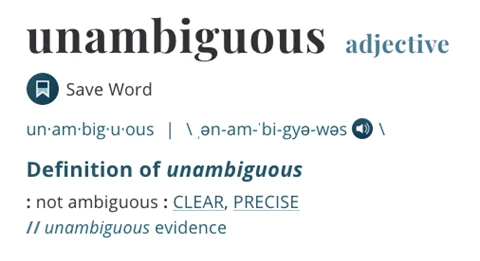Author: Mike Harvey

The Freemail Pitfalls

Essential Tools for Today’s Business

The Reality of Orphaned Apps

IT Security Primer for SMBs
How big of a deal is IT Security for SMBs?
No business is too small. Small and mid-sized businesses are the number one targeted segment of cybercrime. It’s not a question of if you will be attacked, it’s a question of when.
SMB IT Security
A PRIMER FOR SMALL AND MID-SIZED BUSINESSES

American University and Hacker U Select CMHWorks as a Hiring Partner
American University & HackerU has chosen CMHWorks as a recruitment partner to consider candidates who have completed their Cybersecurity Security Professional Program. With the threat of cyberattacks on the rise, the program recognizes how appealing an IT Professional with a Cybersecurity knowledge base can be to a company like CMHWorks.
Washington, DC – July, 12, 2021. Israel’s premier digital skill and cybersecurity institute, HackerU, has been partnering with educational institutes worldwide, currently in 12 countries. In 2019, HackerUSA, a subsidiary, has partnered with American University, based out of Washington, DC.
According to Bryan Gulcin, Business Relations Manager at HackerUSA in recent LinkedIn post,
“We are happy to collaborate with CMHWorks and add them to American University‘s and HackerU‘s growing list of hiring partners!”
Mike Harvey, founder and principal owner of CMHWorks, has more than 30 years of experience as a Technology and Operations executive with broad experience in enterprise technology strategy, development, implementation, and management. He founded CMHWorks, LLC in 2014 to provide Technology Services and Support to public and private sector clients.

Part 3: Why Customer Case Studies Pack The Most Marketing Punch
Out-of-the-box Case Studies
Go outside the format box
The traditional case study format with four subsections isn’t written in stone. Shaking things up can grab a prospect’s attention and provide a bit of entertainment along with education about your product.
- Make it eye-pleasing. I’ve seen a case study that placed just Problem and Outcome side by side at the top of the page. I have to say it looked less like an ugly homework assignment than those case studies with long bullet lists at the beginning.
- Slideshares can present key info in an inviting format that’s quick to go through for prospects with little time to spend reading. And who can resist clicking those arrows?
- Infographics are great for presenting key numbers and stats you’d like to boast about.
- Video case studies are an increasingly popular alternative to long-form text case studies. One study found that 72% of consumers prefer video messages over text. Consider the power of marketing content that combines their preferred media (video) with their preferred message (real customer review). A three-to-five-minute video featuring a customer can give a prospect a personable introduction to the brand that’s hard to achieve in text — and it can be less time consuming for fickle searchers at the beginning of the sales funnel.
- Some of the best case studies combine text, video, images, etc. on the same page, immersing prospects in a multimedia experience of the product and customer.

Use visuals — and not just pie graphs
Photographs, pictures, vivid colors, animations and video — especially video — can all help bring your customer story to life.
- If your numbers — for increased sales, growth, etc. — are impressive, consider placing them at the top of the page, enlarged and in color.
- Visual elements are especially useful if your case study text content is limited. A large photo with some punchy text and blown-up statistics or percentages can make an impact on prospects.
- Dramatic before and after pictures that demonstrate a product’s effectiveness can be compelling. If you can get your client to collaborate, you can also make a photo story following the company from initial adoption to results.
Use a different variant of the case study for each part of the sales funnel
Show B2B buyers at the beginning of the sales funnel case studies in the form of infographics and video (actually, video’s a great converter at any stage); show those at the middle of the funnel articles, interactive content, webinars; and give those at the end longer case studies that emphasize ROI.
This is especially important for companies with dense or difficult material in their case studies. Technology companies, for instance, might do well offering a light video testimonial as an introduction rather than a long text filled with technical terms.
Make a sidebar for long text-based customer stories that gives an overview of the story with important data. Use color or images to make it stand out and attract the eye. Those without time to read the full can read the sidebar to get the gist of the problems and outcomes.
Combining text, video, infographic and slide share on the same page offers a version of the case study for every kind of prospect in one place.
Repurpose case study material
The material in one case study can be spread and repurposes all over your online sites. Not only can you can publish the case study on your company website, Medium, LinkedIn, Facebook, etc. You can also place glowing customer quotes on product pages and near CTAs, tweet them out and post them on Facebook (and use them in FB ads) and LinkedIn. Passages can be used in emails, presentations and eBooks. They can be used in white papers to make them less dull. They can be referred to in subsequent blog articles on your site.
The cross-promotional potential of case studies presents a particularly interesting opportunity for exposure. Request that case-study participants — which may be just the person interviewed or every person in the company, depending on how you look at it — to pose the story on their social channels. That will instantly put your brand in front of all of their combined social followers. After all, you are giving them exposure to your audience by posting it on all of your pages, so they probably won’t mind reciprocating.
Case closed
True customer accounts are what customers want to see when they have a buying decision to make. They are also the kind of high-quality original content that search engines reward with high rankings. A great case study combines so many high-power marketing elements in one package — real reviews, unique material, authentic quotes, data and stats, a relatable story, etc. They answer your customers’ pressing questions about how your product or service performs in real life in an enjoyable format. Competitors publishing rehashed mush from around the web or tooting their own horn with overused buzzwords won’t be able to compete with that.
Contact CMHWorks today to find out how we can help you reach your marketing, content and social goals.
Sources:
https://blog.hubspot.com/marketing/state-of-video-marketing-new-data

Part 2: Why Customer Case Studies Pack The Most Marketing Punch
Part 2: Why Customer Case Studies Pack The Most Marketing Punch
Part Two: How to Awesome Case Studies

How to Inject Some Awesome in Your Case Studies
Write like a journalist
Or hire one. Eighty-four percent of B2B marketers outsource content creation. When it comes to case studies, look for a writer with journalism experience. Most case studies begin with an interview of the customer. Having a third party do this can help loosen up the customer and get honest opinions from them. Someone outside the company will also be more likely to ask the kinds of questions a random read would ask. The interview can be done over a video call and in emails to follow up. A journalistic writer’s interviewing skills will be useful for drawing solid, real-life examples and great quotes from your customers. And their narrative-crafting skills will likely be better honed than those of a typical copywriter.
A good example of how much more attractive article-like content can be compared to marketing copy comes from Microsoft. It first pitched the story of its project to turn its-500-acre headquarters into a smart campus to journalists, but they declined. So, it wrote the story, titled 88 Acres: How Microsoft Quietly Built the City of the Future, itself. Within two days of publishing it, 800,000 people had read it.
To give your case study a journalistic look and tone:
- Compare a press release and editorial article side by side, and make sure your case study reads more like the later.
- Use your writer’s byline on the piece and mention that they work/have worked as a journalist. This can boost the reader’s trust that content provides an objective outlook.
- Don’t bury the lead. Include an introductory paragraph that gives the reader the main points of the piece upfront.
- Use a strong title that conveys the most interesting thing about the case study. Include strong data, like “customer increased sales by 80% in first six months.”
Tell a story in which your target customers/readers can see themselves
First, think about which segment of your target customers you are trying to reach with the case study. Then, determine which of your customers most closely resembles that demographic — that’s you want to write your case study around. The more the reader can see themselves in the subject’s shoes, the more strongly the case study will grab and impact them.
Convey your knowledge of the subject’s industry by writing about it intelligently and in detail. Go deep into the common pain points those in the industry face. Fill the case study with material the target reader can relate to, scenarios in which they can see themselves. When the reader reads material about their own industry, they will “click” and identify with your brand.
Say you sell a suite of recruiting software tools, and you’re going after young companies that need talent but can’t afford full-time recruiters. Select a subject that fits into that demographic, and get him/her to talk about the day-to-day realities of trying to balance recruiting with all the other duties of a startup, the need for software to cut the leg work out for them, the prohibitive cost of headhunters, how well the solution worked, how perfect the new hire is for the company, etc. The more detail, the better.
Content that’s presented as a story can increase audience engagement by 5x. To make all the stages of the subject’s journey vivid, and help your reader fully relate:
- Remember your reader is currently in the midst of making an important, potentially high-cost decision and play to that. Highlight the indecision and confusion your subject faced when trying to make a choice. Playing to the emotions the reader is feeling in the current moment will have a powerful effect on them and help them identify with the subject.
- Take the reader all through the rollercoaster of the subject’s journey in a dramatic story with suspense, surprises, and finally relief and success. Give a lot of attention to the pain points they experienced and the ill effects their lack of a solution had on them and their company.
- It’s important to detail the shopping process they went through before coming to your products. Your reader may be considering those very competitors at the moment. Have the subject name the other brands they investigated or tried and why they ultimately chose yours.
- Detail all the benefits the subject realized from using your product or service. How did their choice result in increased revenue, efficiency, happier customers, employees with more time to work on other tasks, a work day that goes by easier, etc.
- Remember to ask your subject to be honest about any weak spots or things they wish your product did better. Your case study should cast your product in a positive light overall, but allowing a small dent to show gets honesty points and raises the reader’s trust level.
- Quotations are among the most powerful, persuasive case-study elements. Try to get memorable, revealing, true-to-life quotes about your interviewee’s experience. Use them throughout the text. Enlarge them, set them off, or use color or graphics to make them stand out.
Note: Some companies do not want to reveal who their clients are publicly. They can use descriptors, like “a medium-sized hotel in the Middle Atlantic” instead of the actual name.
Sources:
https://www.autogrow.co/how-to-increase-sales-funnel-engagement/

Part 1: Why Customer Case Studies Pack The Most Marketing Punch
Part One: Why Case Studies
Why Should I write a Case Study?
Over 90 percent of companies are using content for marketing and growth. But when you look at what they’re actually producing, it’s pretty clear that few are pushing the envelope. Most of the content they put out doesn’t stand out or work for them like it ought to. The internet provides cheap or free space on which to broadcast their message. And there are tons of creative resources and tools available for crafting practically any kind of material they can imagine. You’d think this would fuel an outpouring of novel brand content that doesn’t cleave to tired old formulas. Yet most companies are coming up short. Case studies are a prime example of this. I believe real-life customer stories might be the most underutilized tool in the modern marketing scene.
Data from surveys of B2B marketers and buyers says it all. One study from Content Marketing Institute asked B2B marketers what types of content they were using.
The top five types were:
- Social media content (tweets, stories,etc.);
- Blog posts/short articles;
- email newsletters;
- in-person events;
- videos (excluding live streaming).
Case studies came in at a humble number six. It’s not that the top five aren’t good; they have their place; they can be great. But what could be of more interest to prospects than what your product actually did for a customer just like them? Straight from the horse’s mouth? Would they perhaps prefer more “enterprise grade,” “scalable,” “next gen,” “solutionized” about us blather?
Your prospects want to hear about their issues, their problems, their wants. A good way to deliver is through an account of someone who has stood in their shoes. A number of surveys have shown that at the middle and late stages of the sales funnel, nothing converts better than customer case studies. According to one such study, 73% of B2B marketers named case studies as the best content for accelerating leads in the mid and late stages. The same study found that 73% of B2B marketers said case studies accelerate leads at the mid and late stage.
This shouldn’t surprise anyone who shops online and knows how they react to customer quotes versus company copy. Product reviews are 12x more trusted than product descriptions when consumers are trying to make a buying decision.
Case studies that read like articles are also good for organic search rankings Seventy-two percent of buyers begin their research with Google, which has updated its algorithms in recent years to reward quality content. This means original research or analysis, new information and overall good writing are favored over rehashes, keyword stuffing and low-grade content-mill type stuff. Case studies tick a lot of the right boxes for quality, search rankings and buyer traffic. They present totally unique content and straight-from-the-source info that you and only you can produce. Competitors can’t copy them, and that makes them just about the most valuable content pieces possible. This is good news because it’s pretty tough for small to medium sized companies to outrank Wikipedia on basic, universal topics.
That said, the fact is that a lot of marketers produce case studies that are not as good as they could be. It’s an area where I’d like to see better storytelling, multimedia innovation, creativity, authenticity, person profiling, entertainment, etc.
In the rest of this article, we’ll look at the basic outline of a customer case study. Then, we’ll look at some ways to make a case study better than basic — a highly charged power tool for winning over buyers at all parts of the customer journey.
What Is a case study?
A case study is any type of content that details a particular customer’s experience with a product or service. A typical case study comprises the following four sections:
- Client: The opening section provides an overview of the client and its basic stats, like size, market position, and any unique or significant facts about it.
- Challenges/objectives: The second section details the specific challenges that led the customer to seek out a solution. It may also be that it was not a pressing problem, but rather a desired goal which sent it in search of assistance.
- Solution: The all-important third part tells all about how the client solved the problem with your product or service. Naming the companies it previously looked into before deciding on your own is usually a good idea. Dramatic anecdotes about how individual parts of the problem were solved also make a strong impression on readers.
- Outcomes: The fourth and final part states the ultimate outcomes. Data, impressive numbers, dramatic before-and-afters and customer quotes make for strong endings to case studies.
That’s the template for a standard case study. How you tweak it, add to it, improve on it, or amplify certain sections, though, can take your case study beyond standard, make it stand out and speed customers through the sales funnel.
Sources:
https://contentmarketinginstitute.com/wp-content/uploads/2019/10/2020_B2B_Research_Final.pdf

Domain Driven Design: Your Whole Dev Team Speaking the Same Language
Use domain driven design to maintain software code that mirrors the actual domain to which it refers. This ensures that all stakeholders speak the same language from the start of the project to final deployment.
In the prehistoric days of software development, product managers would hand a stack of documents to developers who would then disappear for two or three months. When they returned with the product, everyone would hold their breath and inspect it to see if it met expectations. If it didn’t, a lot of wasted time, money and costly rework were the result.
Why would businesses make such risky bets on developers? In short, because they don’t know jack about code. But thankfully, there are now more inclusive development paradigms to prevent such debacles. Without a doubt, one of the best is domain driven design (DDD). This is because it puts the client’s business at the center of development right from the very beginning — nay, even before the technical start of development, before a single line of code is written. This results in total clarity regarding the business as represented in the software, including all its parts, their relationships and, more crucially, their terminology. The scope of all of those things as a whole is what is meant by the term “domain” in domain driven design.
Not all software developers use domain-driven, plain-language methods. This may be because they don’t want to do the upfront work it takes to understand the client’s business, or they simply lack training in the method. Some may even engage in a practice whereby they write difficult-to-decipher code so that the client will be less able to transfer it to another company to run for them, i.e., “security by obscurity.”
Clients would do well to learn the basics of domain driven design to ensure that the developers they hire adhere to its most important tenants at the least. It is the technique most favorable to clients since it reduces cost, rework, time to debug and also enables agile iteration, which is key to staying competitive in today’s digital business landscape where up-to-date software is an increasingly important part of your offering. But most importantly, it allows to business to ensure its domain-specific requirements are reflected in a understandable and sustainable way
What’s in a Domain?
Domain driven design (a form of behavior driven development) maintains that software code should mirror the actual domain to which it refers. This means both the structure and language of code — class names, class variables, class methods, etc. — should match the real-life domain as closely as possible.

The domain is usually a particular business domain, but it can be any sphere of knowledge, objects, activity, etc. In other words, it’s all the parts that make up the thing for which the software is being developed, taken as a whole. It might be a company, with its inventory, employees, customers, activities, etc. It may be any number of other things, for example, an educational course with its teacher, students, required texts, tests, so forth. DDD takes such real-life contexts and their contents and renders them in the form of a software program.
Key Concepts in DDD Include:
Domain – The main sphere of knowledge, activity, etc. for which the software is being created.
Ubiquitous Language – A language that describes all domain elements, activities, methods, etc., strictly adhered to by all parties to the software project to understand, plan, build and discuss the software and its behavior.
Model – A system of abstract descriptions of certain domain aspects that can be used to solve domain problems.
Context – A particular setting within the domain that determines how a term or group of terms appearing in it are to be interpreted. A single context extends just as far as a single model can extend without compromising its conceptual integrity.
Context Mapping – Large software projects often give rise to multiple distinct models and contexts. It’s important to keep them separated to avoid confusion, miscommunication and bugs. Bounded Contexts explicitly define the areas where a particular context takes effect, or a particular model is to be applied. They may conscribe, for example, the “Sales” model in one bounded area and the “Support” model in another.
Mapping bounded contexts visually is quite helpful for teams. It can solve the tug-of-war between single terms in DDD’s ubiquitous language. In the above example, the term “Customer” may be used in both contexts but have somewhat different meanings and functions within each. Bounded contexts ensure that everyone understands what “Customer” refers to in the Sales context versus the Support context.

In English, Please
Plain, human-readable language is at the core of DDD and is what makes it superior to other development methodologies in many people’s minds, and particularly from a business client’s standpoint. It opens channels of communication between teams, enables the business to understand and agilely, iteratively, direct the design of software as it is being built, and it prevents a situation where the business can’t transfer the code due to obscurity.
DDD developers need to become adept in best practices around naming conventions. They include:
- Choose easily readable identifier names
- Keep code as brief as possible, but, ultimately, favor readability over brevity
- Don’t use abbreviations or contractions in identifier names
- Don’t use acronyms that are not well known, and even if they are, only when necessary
The purpose of these principles is to write more human readable code and prevent the need for familiarity to quickly understand what is going on in a given code block or specific line. Below is an example of code taken from bad to better to best with DDD best practices:
var wo = GetSomethingFromAService(); //
(Requires context outside of line to understand "wo.")
var workOrder = GetSomethingFromAService(); //
(We know this is a work order, but is it an entity or model?)
var workOrderEntity = GetSomethingFromAService(); //
(We now know this is an entity work order, not a model work order.)
Identifier names can get as long and detailed as needed in order to tell a technical or non-technical reader what the purpose of the code is.

Call it what it is — but only once everyone agrees on what to call it
I’ve worked with some otherwise great developers who’d absorbed some technical knowledge about DDD, rolled up their sleeves, and said, “I’ll just name everything exactly what it is.” At which point, I’d swivel their chair away from their computer screen and interject, “Not so fast.”
You see, the most critical part of DDD begins before a line of code is ever written. That’s because computer programs do not like ambiguity and rarely miss a chance to make it known. Therefore, there can be zero ambiguity in the naming of elements in a domain. Everyone on the team or teams — on both the business and the development sides, whether they total five, fifty, or a hundred and fifty people — must reach complete agreement on what all domain terms mean.
Developers may think it’s safe to make assumptions about the naming of some elements.
For example, a developer might contest, “Well, this right here is obviously a widget, so there’s no point asking the product owner if everyone at the business agrees that it’s a widget. It’s self-evident.”
The correct response to this common line of thought is: Obvious to whom? Self-evident to whom? The truth is that lack of agreement on what domain objects are named is common even when team members least suspect it. And even small assumptions can lead to big bugs, inaccuracies and breakdowns in a finished software program.
It’s important to understand DDD not as just a technical method for programming, but a pathway for frictionless communication between software developers and their clients.
“Domain driven design is really a solution to the knowledge gap between the people who are building software and the people who are asking the engineers to build the software for them,” said Robert Lara, software engineer at CMHWorks. And it had better be the developers bending over backwards to understand and adopt their paying clients’ preferred terminology — not the other way around. It may be true that every company is becoming a software company, but that doesn’t mean it is feasible for business people to learn coding. Ideally, developers will increasingly adopt the language of the business and embed it into the software, so it’s easily understood by technical and nontechnical people alike. That’s a task that DDD is tailor made for, and it begins with an effort to build a glossary of terms the business prefers to describe the domain.
U-N-A-M-B-I-G-U-O-U-S

Here are some guidelines and tools to make the initial baselining of domain language as brisk and easy as possible.
Give the Business the First and Last Say
The business should be the authority in naming the domain elements. This prevents time-consuming disagreements and confusion. The first step is to have them set forth all the domain terms they know. These can eventually be placed within bounded contexts and mapped out through the larger domain model. If a new term comes up, place it in its proper place in the domain.
Build a Glossary
Maintaining a complete glossary of domain terms will serve both developers and clients very well for as long as they work together. Organize it alphabetically, by context, business segment, team and any other rubric that may help you reduce search time and be more efficient. And remember to keep it updated.
Visual Paradigm’s Glossary Grid is one very good tool. You can also make a glossary in a program you probably already have like Microsoft Word, Excel or Google Docs.
CMH has one particular client with a very obscure business model. Its domain contains a lot of acronyms, various unusual types of procedures, purchases, purchase orders, products, etc. We just onboarded several new developers who would have faced a very steep learning curve in decoding all that language if not for the glossary we documented for the project. They all read through it, and we have not had a single instance of confusion when talking about user stories, etc.
Put Domain Terms Where All Eyes Can See
Make the glossary openly viewable to all project participants on both the development and business side. Applications like Microsoft Teams, Slack and Basecamp have features for group collaboration and posting. Get everyone to personally sign off on the definitions of all terms.
The Payoff
With all terms unambiguously defined, known and easily searchable if needed, everything about development just runs smoother. Talks about user stories have fewer hiccups; developers, business people, QA managers and even customer service representatives can all fluidly exchange ideas, note issues and agree to changes amongst each other. Unambiguous language at the code level helps teams write better tests that are less likely to fail what should pass or vice versa. Debugging has less guesswork, searching, asking, waiting for answers, etc. When a rep says, for example, users keep complaining about a character limit in the search field, the developer knows exactly what the rep is talking about. The developer will be able to find it right away — perhaps the precise code lines to fix are even named “search field” and “character limit.” How easy is that?
To illustrate the difference made by code based on unambiguous language, we’ll take a particular CMH client as an example. The client asked us to redesign an internal application — we’ll call it version 4 — to replace an old one we’ll call version 3.
“When it came to calculating figures, there were calculations all over the system. And if there was ever something that wasn’t calculated properly, you didn’t really know where the calculation was; you didn’t know what it was called; you didn’t even know which programming language that calculation would be calculated in,” Lara said. “And that caused havoc in trying to fix bugs.”
Changing just two or three lines of code may have required an engineer to investigate three different system parts, decipher three distinct code languages and fix the problem in multiple different locations.
Since CMH redesigned the application with a DDD foundation and framework, calculations in the system are easy to locate. There is no longer any “hunting” through the code for where they may be hiding, because it’s literally spelled out. And debugging is much easier and much cheaper. “The client has responded that the turnover for bugs is drastically faster with the new app,” Lara said.
There is enough additional technical material about DDD to fill a couple of fat books. Eric Evans’ seminal Domain Driven Design is one obvious recommendation. Just remember that without a ubiquitous language that is unambiguous and unanimously agreed upon, none of that other stuff amounts to a hill of beans.
To be clear, DDD is not appropriate for all Software Development projects and should be reserved for complex or esoteric domains to clearly represent the language, terms, events, and controls necessary to deliver a clear and concise domain model. Why? Because simple projects with simple or standard domains don’t necessarily need to incur the extra cost. These are the kinds of decisions that can make or break a project and what separate real developers from hobbyists. Now as an educated consumer of software, you know what to ask.
The development experts at CMHWorks would love to talk with you about executing your next software project. Get in touch with us today if you want it built right the first time and maintained the right way all the time.

Cyber Security in an Increasingly Digital Workforce
On December 14, 2020 the NY Times published the article Russian Hackers Broke Into Federal Agencies, U.S. Officials Suspect.
The breach of the software, known as SolarWinds, was so alarming that an order went out directing confirmation the software was no longer in use, by Monday. Yes, Monday.
The U.S. Government is a gigantic bureaucracy. Time is measured in years or decades. Demanding anything be done in under a week is itself unprecedented.
It took place during COVID. Another thing going on during COVID was unparalleled use of the internet for working remotely. As millions of workers, government and otherwise logged in each morning to collaborate remotely, the Russians were turned in. Oh, and the Chinese (CCP) were too.
A September 2020, NYTimes report, China-Backed Hackers Broke Into 100 Firms and Agencies, U.S. Says reported “a group of hackers associated with China’s main intelligence service had infiltrated more than 100 companies and organizations around the world to steal intelligence, hijack their networks and extort their victims.”
This is massively disconcerting to any U.S. business working online. The threat is particularly grave for tech companies. Russia and China have been stealing U.S. technology for decades. A quick comparison of airplanes manufactured by either country illustrates how much these two superpowers like to copy American ideas and hardware.
If you have remote work sites, you are at greater risk than you if all your computer infrastructure is in-house. We recommend steps to help mitigate the threat while you figure out long term fixes.
At a minimum, run your network thorough a VPN service. It gives you encrypted connectivity to the and prevents easy identification of your physical location when online. Be ever more wary of unexpected or hard to identify communications.
Until organizations can install the hardware needed for more secure remote workplaces (often homes), the organizational culture needs to be one of caution at a level above what was commonplace when staff was on under the company’s roof.




